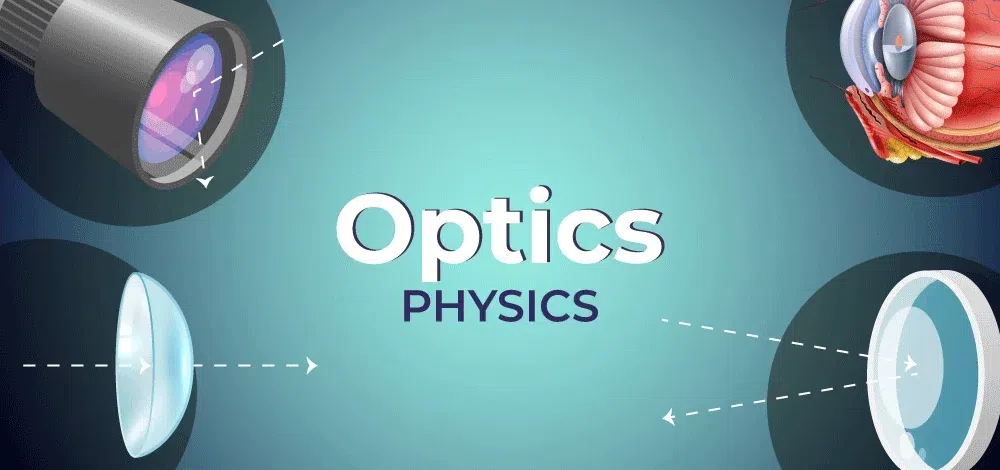WORLD OF PHYSICS!
Physics is the branch of science that studies matter, energy, and the fundamental forces of nature through space and time. It is one of the most important subject in Science. Physics is one of the earliest fields of science. Whatever we see and feel nowadays is associated with Physics. It helps scientists make the modern world more comfortable.

DEFINITION:
- Physics is branch in which we study about matter, energy, and the fundamental forces of nature through space and time. The word physics is derived from the Greek word Physikos which means natural or physical.
- The rules of universe are understood and described using the study of physics. Starting from tiny particles that constitute matter to the massive forces that rule the cosmos, physics comprises of many topics and concepts.
- New technologies are frequently made possible by improvements in physics. For example let us consider, our knowledge of physics and its subfields have led us to create goods such as television, computers, home appliances, and nuclear weapons. Similarly, improvements in thermodynamics have drastically affected the growth of industrialization, and improvements in mechanics have influenced the creation of calculus.
BRANCHES OF PHYSICS
- Physics is such a vast subject. It has numerous concepts and theory which makes study of Physics complex. So it is categorized in various branches to study effectively.
- The seven branches of physics are optics, electromagnetism, relativity, thermodynamics, acoustics, quantum physics, and mechanics. There are smaller categories within these broad areas.
MECHANICS:

- Mechanics study how matter, force, and motion are related to one another with respect to physical objects.
-
The three branches of mechanics are:
- Statics, which studies forces acting on and inside a body when it is at rest,
- Kinematics, which defines possible motions of a body or system of bodies,
- Kinetics, which explains or predicts the motion that will occur in a certain situation or specific condition.
OPTICS:

- The branch of Physics in which we study about Light and it’s properties and how it interacts with other phenomena. Visible, ultraviolet, and infrared light behavior is often described by the science of optics.
- Light has many properties in common with X-rays, microwaves, and radio waves because it is an electromagnetic wave.
THERMODYNAMICS:
- Thermodynamics is the branch of Physics in which we study about interaction between heat, work, temperature, and energy.
- Thermodynamics broadly refers to the process of moving energy from one location or form to another. The fundamental principle is that heat is a kind of energy that is equivalent to a specific quantity of mechanical labor.
ELECTROMAGNETISM:

- The study of charge and the fields and forces it generates is known as electromagnetism. Two components of electromagnetism are electricity and magnetism. One of the four basic forces of nature is the electromagnetic force.
- In interactions between atoms and molecules, it is the dominating force. Electromagnetism can be referred to as a mixture of electrostatics and magnetism, two separate interrelated phenomena.
- Magnetism is an interaction that only happens between charged particles in relative motion, whereas electromagnetic forces happen between any two charged particles, generating an attraction between particles with opposing charges and repulsion between particles with the same charge.
ATOMIC AND NUCLEAR PHYSICS:

- The atomic nucleus’ structure and the radiation that results from unstable nuclei are the subjects of this branch of physics. In addition to researching other types of nuclear matter, the study of atomic nuclei, their components, and their interactions is known as nuclear physics.
- Atomic physics, which examines the atom as its whole, including its electrons, should not be confused with nuclear physics.
GEOPHYSICS:

- Geophysics is the branch of physics that focuses on understanding the Earth’s structure, composition, and processes using principles and techniques from physics, mathematics, and geology.
- This branch of Physics deals with the study of various Earth and Geo concepts to understand the nature.
IMPORTANCE OF PHYSICS:

- Understanding Physics and it’s application is crucial because it helps us understand how things work in the world around us.
-
From the smallest particles to the vast space, Physics mad possible to make human life easier by the application of Physics. Some important features of Physics are:
- Natural Phenomena: Physics helps us comprehend the fundamental principles governing the behavior of matter, energy, and forces in the universe.
- Technological advancements: It drives innovation by providing the foundation for developing new technologies, from electronics to space exploration.
- Solving real-world problems: Physics contributes to solving challenges in fields such as energy, medicine, and environmental science through its principles and applications.
- Understanding of Universe: It expands our knowledge of the cosmos, from the behavior of subatomic particles to the dynamics of celestial bodies.
- Critical thinking: Studying physics encourages analytical thinking, problem-solving skills, and a deeper appreciation for the natural world.
APPLICATIONS OF PHYSICS:

- Physics is an application based subject. In each branches of Physics, there are various modern applications developed on the base of Physics.
-
Some applications of Physics are:
- Applications of Physics in Engineering
- Applications of Physics in Education and Research
- Applications of Physics in Communication
- Applications of Physics in Medicines
- Applications of Physics in Geophysics
- Applications of Physics in Nanotechnology
- Applications of Physics in Material Science
- Applications of Physics in Technology
- Applications of Physics in Electronics
- Applications of Physics in Environmental Science
- Applications of Physics in Engineering







